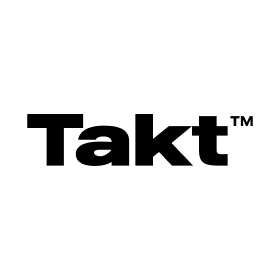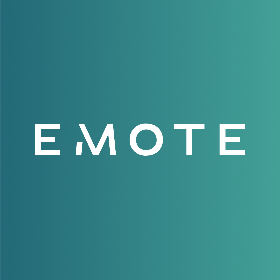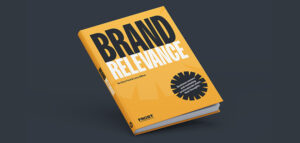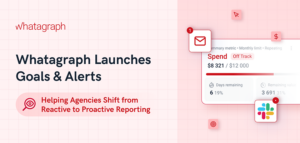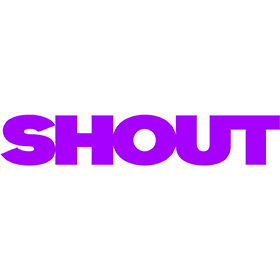
Best Marketing Memes for Industry Insiders & Virality
Key Takeaways
- Memes are a great tool for marketers to connect with consumers, create content that can be shared, and capitalize on societal trends.
- In the digital marketing world, memes highlight common struggles or triumphs while telling a short and funny story.
- When done well, meme marketing can humanize the brand, making it feel more approachable and relatable.
- Some audiences prefer dry, sarcastic humor, while others enjoy lighter jokes.
- Some memes do well with minimal text, while others need a bit more context.
What’s inside?
- Why Memes Are an Effective Tool in Marketing
- What Makes a Great Marketing Meme?
- Top Marketing Memes That Industry Insiders Love
- How to Create Memes That Resonate in the Marketing World
Why Memes Are an Effective Tool in Marketing
A meme, as you already know, is a type of content spreading rapidly online through social media platforms. It often consists of images, videos, or text, sometimes paired with cultural or pop-culture references, no doubt.
According to evolutionary biologist Richard Dawkins (and his 1976-dated book) memes are:
“Our ideas, ideals, cultures, and customs [that] replicate themselves. Like viruses, they travel from person to person through imitation, sharing, and repetition.”
In marketing, memes serve as a way for brands to tap into cultural trends, build rapport with their audience, and create shareable content.
We actually talking about a type of humorous content that is appreciated by 74% of consumers, according to research by Adweek. While they are typically lighthearted and entertaining, they have become powerful tools in marketing because of their ability to quickly engage audiences, create connections, and spread brand messages in a way that feels non-intrusive.
What’s more?
- Memes are naturally designed to go viral due to their easy-to-digest format and relatable nature.
- Memes allow brands to quickly join conversations that are already happening online, creating an immediate sense of connection and relevance.
- While traditional advertising campaigns may require large budgets, memes can be created with minimal resources yet still have the potential to reach millions.
- Memes allow brands to showcase their human side through humor.
- Memes are succinct, making them perfect for today’s fast-paced digital environment, where attention spans are short.
Considering that type of content has all these benefits, it’s not surprising that brands & businesses have 10 times more reach when using memes.
In case you want to know about advertising memes, check out the following video. Now, we’ll jump into the next section.
What Makes a Great Marketing Meme?
As we stated before, memes bring humor and relatability to the often stressful, constantly changing digital marketing world. The main question is what makes them a great tool for that field.
No matter the type, advertising, brand awareness, or client memes resonate with each side of the digital world—both clients and marketers. Because they highlight common struggles or triumphs while telling a short and funny story. A meme about scrambling after an algorithm update, for instance, speaks directly to the frustrations marketers experience.
Let’s try to describe what makes a great marketing meme in 4 phases:
- Creative and Funny Storytelling: A good meme tells a mini story about the trials and triumphs of being a part of the digital marketing world. Whether it’s poking fun at a dwindling engagement rate or a client’s last-minute request for revisions, these punchy pieces of content make marketing challenges feel lighter and more manageable.
- Cultural Relevance: It is hilarious how true memes that make fun of attempting to follow constantly shifting social media trends are. They reflect real-life situations people face and offer a humorous take on an otherwise serious topic, making them highly relatable to industry professionals.
- Content Marketing Integration: Memes also serve as an essential tool for content marketing; so much so that, with minimal effort and high engagement potential, they are a creative way to communicate brands’ message and establish a presence in conversations around digital marketing challenges.
- Instant Engagement A well-crafted meme is immediately engaging and often shared across platforms, allowing both marketers and brands to demonstrate their creativity while connecting with their audience on a deeper, more human level.
Top Marketing Memes That Industry Insiders Love
When you think of memes in the digital world, a few iconic images likely come to mind: Success Kid, Michael from The Office, the three Spider-Men pointing at each other, and stills from The Shining. It’s no coincidence—marketers love to tap into these widely recognized memes.
In this section, we’ll explore some of the most popular ones.
Let’s start.
“Be Like” Memes
“Be Like” memes totally reflect the nature of memes; they are simple, relatable, and highly adaptable.
These memes allow users to create personalized messages that resonate with their audience via everyday situations or common frustrations.
Source: Google
And yes, the format is easy to customize, making it perfect for delivering humorous or clever messages while still promoting a product or service.
Source: Make your Mark Digital Instagram
Their familiarity and shareability help boost engagement and reach, making them a powerful tool for marketers looking to connect with consumers in a fun and memorable way.
Source: Agency Analytics Instagram
Job Role Memes
Job Role memes are inside jokes in the marketing world.
Source: Hubspot Instagram
Especially popular among agencies, those kinds of memes are a brilliant way to engage audiences because they play on the relatable experiences of different professions.
In addition to offering a connection with the target audience by poking fun at common job challenges or stereotypes, job role memes also humanize businesses. So, we can say that memes are serving both sides; agencies and brands/businesses.
Source: Hubspot Instagram
Because these memes often highlight inside jokes within industries, they help build a sense of community and shared understanding among professionals; it can increase social engagement and brand loyalty.
Daily Life, Starter Pack & Client Memes
If we are talking about digital marketing memes, then we need to secure a spot for the “oldies but goldies.”
As every marketer knows, Daily Life, Starter Pack, and Client Memes have been widely used for several years, and there is no need to say that they are quite effective in marketing environments.
Daily life memes are not risky when resonating with audiences because they are relatable and often humorous.
Source: Hubspot Instagram
When done well, they humanize the brand, making it feel more approachable and relatable. At that point, we need to remind you that daily life memes should avoid seeming too informal or out of touch.
Similarly, starter pack memes are a creative way to visually communicate ideas, products, or experiences. They are often used to humorously showcase stereotypes, expectations, or industry insights.
Source: Upwork Instagram
These kinds of marketing memes can attract a lot of attention if they cleverly tap into trending topics or specific niche interests; they can drive engagement and are great for sparking conversations, especially on social media platforms like Instagram and Twitter.
Employing humor works also for client interactions. We are talking about client memes.
Memes about client behavior resonate with many professionals, especially in fields like digital marketing, design, or freelancing. It allows the audience to see their experiences reflected in a humorous way, which can build engagement.
If done right, client memes can go viral, increasing visibility and engagement for your brand or content. However, it’s important to balance humor with professionalism, ensuring the content doesn’t alienate or offend actual clients.
Expectations vs. Reality Memes
Another type of content that has a natural virality factor is expectations vs. reality memes.
Since people love to share content that captures their frustrations or makes light of common situations, these memes can significantly boost engagement, brand visibility, and relatability.
The “expectations vs. reality” format is a useful tool for agencies to highlight their humorous problem-solving abilities or to call attention to common misconceptions held by clients. For example, comparing unrealistic client demands with a more realistic outcome driven by expert solutions.
How to Create Memes That Resonate in the Marketing World
As a social media marketing tool, memes consist of simplicity, low production, and humorous nature. When considering that memes can help break down barriers, make messages more palatable to audiences, and get clients indirectly, it’s not surprising that you may want to create your own memes.
Actually, there are numerous tutorials on creating memes, like the following one:
However, we prepared a quite quick guide for you.
Step 1: Identify the Pain Point
Find a common frustration: Think about the typical challenges digital marketers face daily, such as:
- SEO algorithms are constantly changing.
- Clients expect instant results from PPC campaigns.
- Balancing social media engagement across multiple platforms.
Choose a specific pain point: Make sure the pain point is something your audience can relate to, like:
- Clients misunderstand metrics like impressions versus conversions.
- There is pressure to jump on every new social media trend (TikTok, Threads, etc.).
Step 2: Choose a Recognizable Meme Template
- Pick a well-known meme format/template that fits the message in the previous step. Memes that digital marketers are familiar with will increase engagement, such as:
“Expanding Brain”: Perfect for showcasing levels of complexity in tasks, like PPC management.
“Distracted Boyfriend”: Ideal for showing marketers getting distracted by shiny new trends while neglecting tried-and-true strategies.
- Match the pain point with the visual: The meme template you choose should complement the pain point you’re highlighting.
For example, if you’re focusing on how clients want overnight SEO success, use a visual like “This is Fine” to express how marketers might feel about it.
P.S. In 2024, there is no strict rule that you need to find a template for memes; a popular photoshoot, a backstage photo, or a funny image that has made a wave in social media can be your meme.
Like the meme, we posted a short ago:
Step 3: Adapt the Text
- Keep the text concise: Memes are quick-consumption content, so the text needs to be short and impactful. Don’t over-explain the joke; let the image and the context do the heavy lifting.
Example: For the “Mocking Spongebob” meme, if the pain point is clients expecting fast results, the text could be:
- Client: “Why aren’t we #1 on Google yet?”
- Marketer (Spongebob mocking): “WhY aRen’T wE #1 On GooGlE yEt?”
- Incorporate industry terms: Use jargon or inside jokes that digital marketers understand, like “CTR,” “ROI,” “meta tags,” or “GA4 migration.” This helps create a deeper connection with the audience.
Example: If you’re using the “Expanding Brain” meme for PPC ads, you could label each stage with increasing levels of ad campaign sophistication (e.g., Boosted posts → Google Ads → Cross-channel attribution).
Step 4: Keep It Relatable and Shareable
- Use universal experiences: Even though the meme is industry-specific, it should still be rooted in shared experiences, so it resonates widely.
- Don’t overcomplicate the meme: Make sure it’s easy to understand at first glance. The simpler and more relatable the joke, the more likely it will be shared. Memes that require too much context or explanation won’t resonate as well in the fast-paced world of social media.
Step 5: Test and Post
- Post at the right time: Timing matters. Post memes when your audience is most active (for example, during peak social media usage times).
- Experiment with formats: A/B test different meme styles, themes, and formats to see which resonates most. This could involve testing:
Humor vs. Sarcasm: Some digital marketers prefer dry, sarcastic humor, while others enjoy lighter jokes.
Simple vs. detailed: Some memes do well with minimal text, while others need a bit more context.
- Gather feedback: Pay attention to likes, shares, and comments. Memes that perform well can inform the tone and style of future content.





